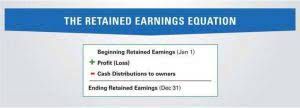
This technique is based on engineering estimates of the costs of production for various levels of output. The physical units of various inputs are computed for a given level of output. This is done on the basis of the rated capacity of plant and equipment and on the basis of input-output norms, which are derived from the pooled judgements of practical operations.

How do you control costs on a construction project?

They can identify cost-saving opportunities, optimize resource allocation, and enhance strategic decision-making based on evolving cost dynamics. Ensuring that cost data is consistently accurate, up-to-date, and interpreted effectively can be a complex endeavor requiring ongoing refinement of monitoring processes. This not only reduces the likelihood of errors but also frees up resources for Car Dealership Accounting more strategic, value-added activities, contributing to overall cost-effectiveness. This cultural shift fosters a proactive approach to identifying and implementing cost-saving opportunities at all organizational levels.
- Real-world examples enhance the understanding of cost control methods in hospitality.
- Budgetary control is not just the tool of the budget administrator but it is the tool of all.
- This might mean having backup equipment like an extra backhoe on standby or a list of reliable subcontractors you can call upon should your primary choice become unavailable.
- By monitoring and controlling inventory, organizations can minimize carrying costs, reduce the risk of obsolete stock, and optimize cash flow.
- In summary, efficient asset management is essential for cost control, and companies should develop a comprehensive strategy to manage their assets effectively.
- Organizations can reduce debt levels by cutting unnecessary expenses, controlling capital expenditures, and optimizing cash flows.
- Situations like equipment failure or a subcontractor backing out at the last minute are not uncommon and can derail your project timeline and finances.
Profitability Tracking
Employing robust cost management strategies in business is not just about reducing expenses; it’s about optimizing your operations to maximize both efficiency and profitability. So, if you’re looking for ways to streamline your project cost control process, consider investing in modern tools like Day.io. With cost control their advanced features and intuitive interfaces, these solutions offer a comprehensive way to manage budgets more efficiently – allowing you to achieve better results faster.
Have a clear understanding of your inventory

Creating a culture of cost awareness and accountability is crucial for successful cost control. Educating employees about the impact of their actions on costs and involving them in the cost management process instills a collective responsibility for financial prudence. Implementing robust budgeting and forecasting methods is vital for effective cost control. Accurate capital budgeting provides a baseline for financial expectations, while regular forecasting ensures adjustments based on evolving market conditions.
Inadequate Technology Challenge

Keeping them engaged from the outset ensures they understand the financial implications of decisions. Uncontrolled changes are one of the most common reasons projects exceed their budgets. A change control process ensures that any modifications to the project’s scope, timeline, or deliverables are carefully reviewed and approved before implementation. Missed deadlines aren’t normal balance just a scheduling issue—they directly impact your budget.



